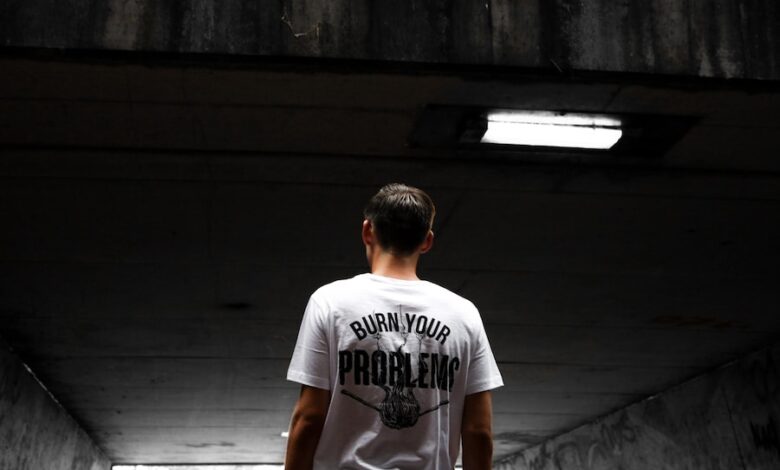Say Goodbye to Threads: A Step-by-Step Guide to Deleting Your Account

Introduction: Why Delete Your Account?
In today’s digital age, our online presence has become an integral part of our lives. We share personal information, connect with friends and family, and engage with the world through various social media platforms. However, there may come a time when you feel the need to take control of your online presence and delete your account. There are several reasons why someone might want to delete their account, including privacy concerns, time management, and the desire to disconnect from the digital world.
Privacy concerns are one of the main reasons why individuals choose to delete their social media accounts. With the increasing amount of personal information we share online, there is a growing concern about how this data is being used and who has access to it. By deleting your account, you can regain control over your personal information and limit the amount of data that is available to others.
Another reason to delete your account is to manage your time more effectively. Social media platforms can be addictive, and spending excessive amounts of time scrolling through feeds and engaging with content can be a major time drain. By deleting your account, you can free up valuable time and redirect your focus towards more meaningful activities.
Step 1: Back Up Your Data
Before you delete your account, it is important to back up your data. Most social media platforms provide an option to download a copy of your data, which includes your posts, photos, videos, and other information you have shared on the platform. This allows you to keep a record of your online activity and ensures that you don’t lose any important memories or information.
To download your data, go to the settings or account settings section of the platform and look for an option to download your data. Follow the instructions provided and wait for the platform to generate a file containing your data. Once the file is ready, you can download it to your computer or other storage device.
Backing up your data is important because once you delete your account, you will no longer have access to this information. By taking the time to back up your data, you can ensure that you have a copy of everything you have shared on the platform.
Step 2: Review Your Privacy Settings
Before deleting your account, it is crucial to review and adjust your privacy settings. This step is important because it allows you to control who can see your information and what information is visible to others. By reviewing and adjusting your privacy settings, you can ensure that your data is as private as possible before deleting your account.
To review your privacy settings, go to the settings or account settings section of the platform and look for the privacy or security options. Here, you will find a list of settings that you can adjust to control who can see your posts, photos, and other information. Take the time to go through each setting and make sure it is set to your desired level of privacy.
It is important to note that even with strict privacy settings, there is still a risk that your data could be accessed or shared without your consent. Therefore, it is always a good idea to be cautious about the information you share online and to think twice before posting anything that could potentially compromise your privacy or security.
Step 3: Deactivate Your Account
Once you have backed up your data and reviewed your privacy settings, you can proceed to deactivate your account. Deactivating your account is different from deleting it, as it allows you to temporarily disable your account without permanently deleting it. This means that your profile, posts, and other information will be hidden from other users, but you can still reactivate your account at a later time if you change your mind.
To deactivate your account, go to the settings or account settings section of the platform and look for an option to deactivate your account. Follow the instructions provided and confirm your decision to deactivate your account. Once your account is deactivated, you will no longer be able to access it or use any of the platform’s features.
Deactivating your account can be a good option if you are unsure about permanently deleting your account or if you just need a break from social media. It allows you to take a step back and evaluate whether or not you want to continue using the platform.
Step 4: Confirm Your Deactivation
After deactivating your account, it is important to confirm that your account has been deactivated successfully. This step is crucial because it ensures that your account is truly deactivated and that your information is no longer accessible to others.
To confirm your deactivation, try logging into your account using your username and password. If your account has been successfully deactivated, you should receive an error message indicating that your account is no longer active. If you are able to log in and access your account, it means that your deactivation was not successful and you should try deactivating your account again.
Confirming your deactivation is important because it provides peace of mind and reassurance that your account is no longer active. It also allows you to move on to the next step of permanently deleting your account.
Step 5: Delete Your Account Permanently
If you have decided that you no longer want to use the platform and want to permanently delete your account, you can proceed to delete it. Deleting your account is a permanent action and cannot be undone, so it is important to think carefully before taking this step.
To delete your account permanently, go to the settings or account settings section of the platform and look for an option to delete your account. Follow the instructions provided and confirm your decision to delete your account. Once your account is deleted, all of your information, including your profile, posts, and other data, will be permanently removed from the platform.
Deleting your account permanently ensures that your information is no longer accessible to others and provides a clean break from the platform. However, it is important to note that some platforms may retain certain information even after your account has been deleted, so it is always a good idea to review the platform’s privacy policy to understand how your data will be handled.
What Happens After You Delete Your Account?
After you delete your account, what happens to your data? This is a common concern for many individuals who are considering deleting their social media accounts. While deleting your account removes your information from the platform, it does not necessarily mean that your data is completely gone.
Most social media platforms have a process in place to permanently delete your data after a certain period of time. However, it is important to keep in mind that this process may take some time and your data may still be stored on the platform’s servers for a period of time after you delete your account.
To ensure that your data is truly gone, it is a good idea to review the platform’s privacy policy and terms of service. These documents will provide information on how your data is handled and what steps the platform takes to protect your privacy. If you have any concerns about your data, you can reach out to the platform’s support team for further clarification.
Alternatives to Deleting Your Account
While deleting your account may be the best option for some individuals, it is not the only option. There are alternatives to deleting your account that can help you maintain some level of privacy and control over your online presence.
One alternative is to limit your usage of the platform. Instead of deleting your account, you can choose to use the platform less frequently or only for specific purposes. This allows you to maintain some level of connection with others while still protecting your privacy and managing your time effectively.
Another alternative is to adjust your privacy settings to limit the amount of information that is visible to others. By reviewing and adjusting your privacy settings, you can control who can see your posts, photos, and other information. This can help you maintain a level of privacy while still using the platform.
It is important to consider these alternatives before deleting your account, as they may be more suitable for your needs. Deleting your account is a permanent action and cannot be undone, so it is important to think carefully before taking this step.
Tips for Staying Safe Online
Regardless of whether you choose to delete your account or not, it is important to take steps to stay safe online. Here are some tips to help you protect your privacy and security:
1. Use strong, unique passwords for all of your online accounts. Avoid using the same password for multiple accounts and consider using a password manager to help you keep track of your passwords.
2. Be cautious about the information you share online. Think twice before posting personal information, such as your address or phone number, and be mindful of who can see your posts.
3. Avoid using public Wi-Fi networks, as they can be insecure and make it easier for hackers to access your data. If you need to use public Wi-Fi, consider using a virtual private network (VPN) to encrypt your connection.
4. Regularly update your devices and apps to ensure that you have the latest security patches and bug fixes. This can help protect your devices from vulnerabilities that could be exploited by hackers.
5. Be wary of phishing attempts and other scams. Avoid clicking on suspicious links or downloading attachments from unknown sources, and be cautious when providing personal information online.
By following these tips, you can help protect your privacy and security online and reduce the risk of falling victim to cybercrime.
Conclusion: Taking Control of Your Online Presence
In conclusion, taking control of your online presence is an important step in protecting your privacy and security. Deleting your social media account can be a powerful way to regain control over your personal information and manage your time more effectively. By following the steps outlined in this article, you can ensure that your data is backed up, your privacy settings are adjusted, and your account is deactivated or deleted.
However, it is important to remember that deleting your account is a personal decision and may not be the best option for everyone. There are alternatives to deleting your account, such as limiting your usage or adjusting your privacy settings, that can help you maintain some level of control over your online presence.
Regardless of the action you choose to take, it is important to stay vigilant and take steps to protect your privacy and security online. By following the tips provided in this article, you can navigate the digital world with confidence and peace of mind.





